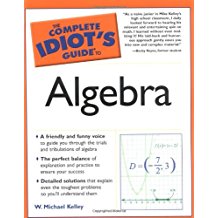Algebra: Introducing the Radical Sign
Introducing the Radical Sign
A radical expression looks like this:
(read "the ath root of b"), and is made up of three major parts:
Talk the Talk
The radical expression ab has three major features, the radical symbol (it looks like a check mark), the index (the small number tucked outside the radical symbol), and the radicand, the quantity written beneath the horizontal bar of the radical symbol.
- Radical symbol: the symbol that looks like a check mark with an elongated horizontal line stuck to the end of it.
- Index: the small number tucked inside the check mark portion of the radical sign; in the expression ab, a is the index.
- Radicand: the quantity written inside the radical symbol, beneath its horizontal roof; b is the radicand of the radical expression ab.
Most of the radicals you'll deal with will have an index of 2, and are called square roots. In fact, they're so common that if no explicit index is written in a radical expression (13 for example), you automatically assume that the index is 2.
Talk the Talk
Radicals with an index of 2 are called square roots; radicals with an index of 3 are called cube roots. While an index can be any natural number, only these two kinds of radicals have special names.

Excerpted from The Complete Idiot's Guide to Algebra © 2004 by W. Michael Kelley. All rights reserved including the right of reproduction in whole or in part in any form. Used by arrangement with Alpha Books, a member of Penguin Group (USA) Inc.
You can purchase this book at Amazon.com and Barnes & Noble.







